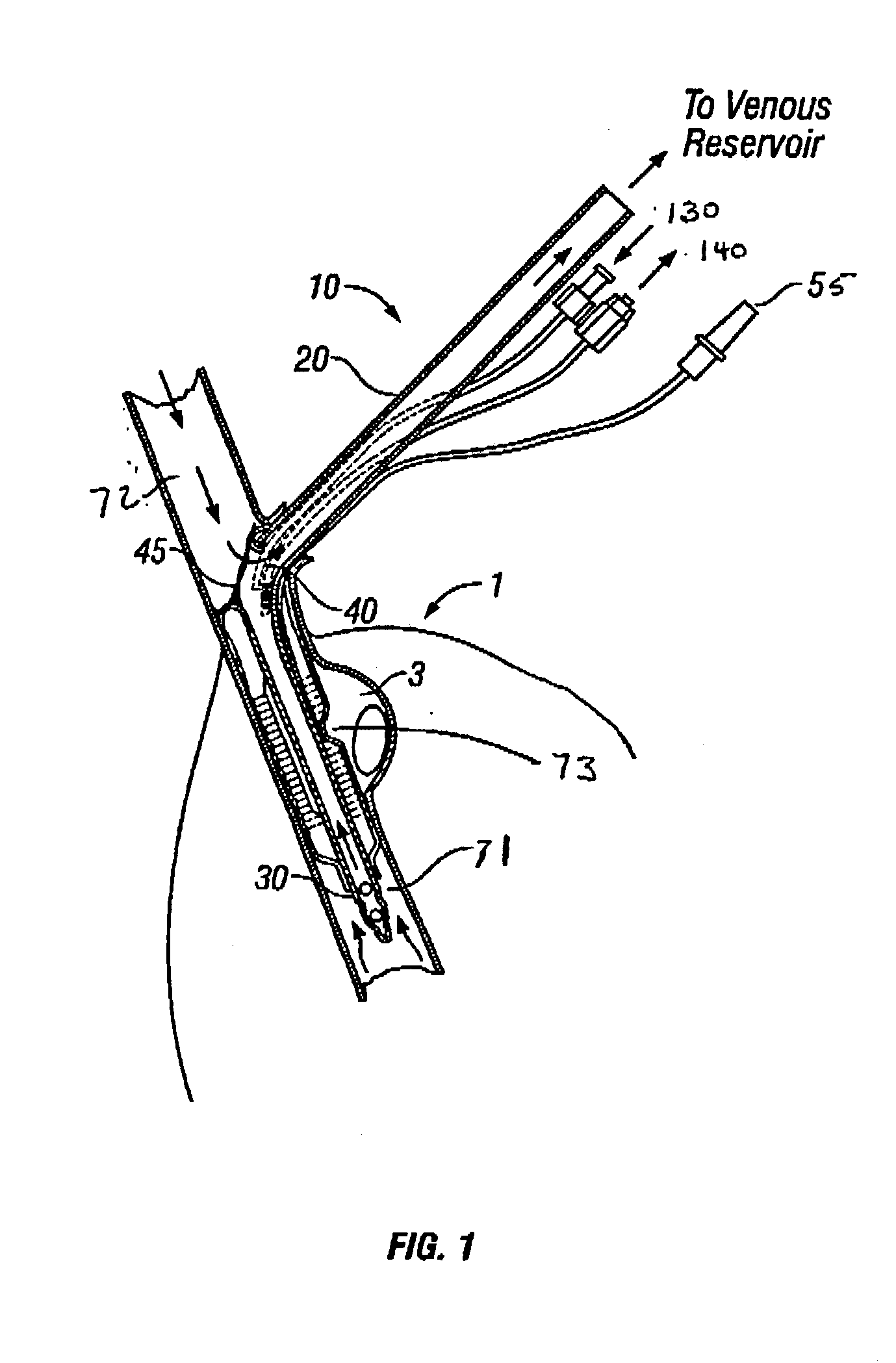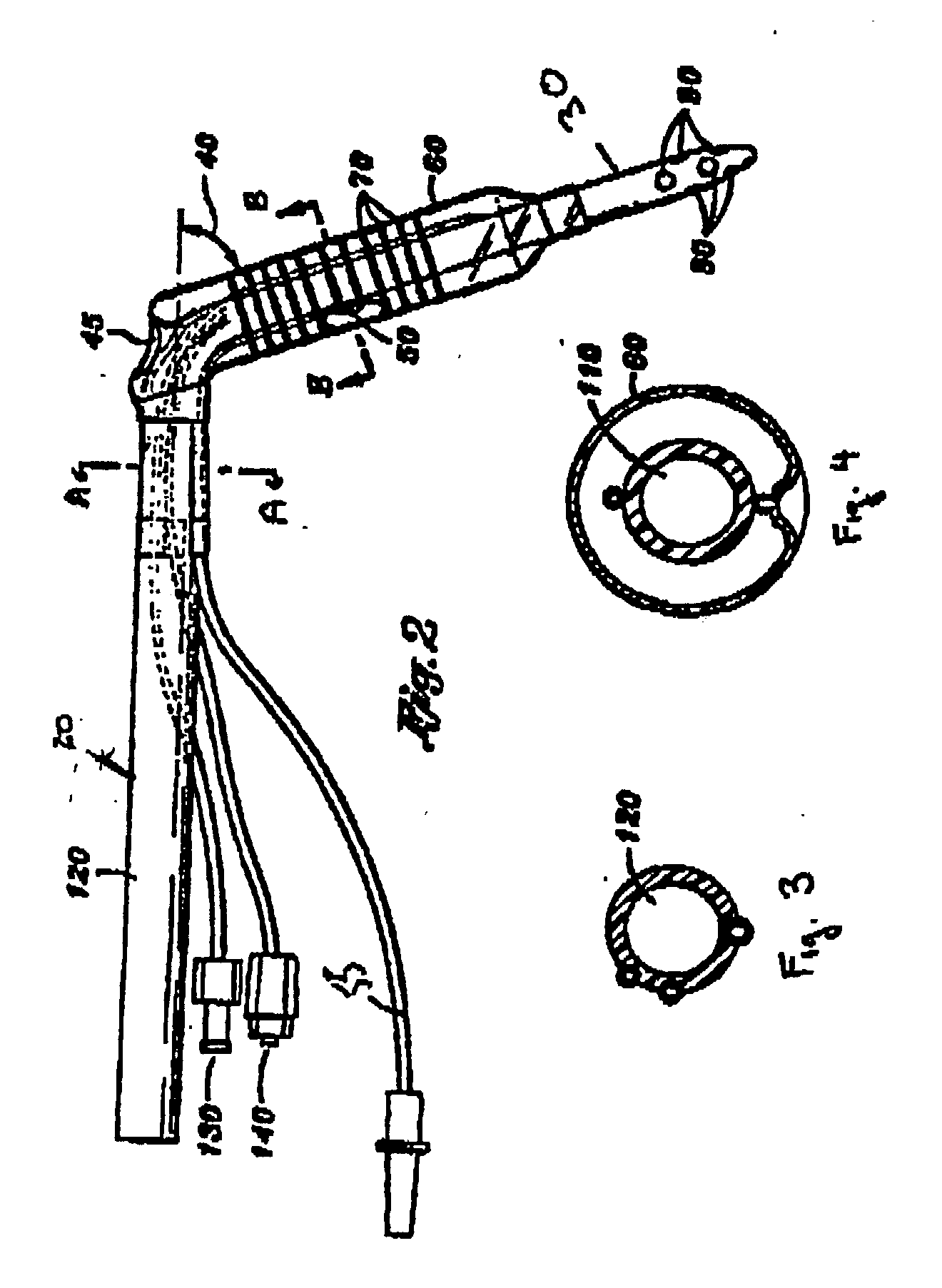Cooling cannula system and method for use in cardiac surgery
a technology of cooling cannula and cardiac surgery, which is applied in the field of medical devices, can solve the problems of limited use, increased risk of angina and ischemia, and increased risk of complication of coronary artery bypass grafting (cabg)
- Summary
- Abstract
- Description
- Claims
- Application Information
AI Technical Summary
Benefits of technology
Problems solved by technology
Method used
Image
Examples
Embodiment Construction
[0056] The present invention is directed to improved cooling cannula systems and methods for their use in cardiac surgery. The present invention may exist in numerous embodiments, including those that may be inserted peripherally thus avoiding the need for a major chest incision such a thoracotomy or median stemotomy.
[0057] By utilizing fluoroscopic or ultrasound imaging, the cooling device when designed in combination with a cannula may be precisely positioned such that upon inflation of inflatable members such as balloons, the flow of blood into the right atrium is fully blocked thereby achieving total heart bypass. The combined cooling device and cannula may use conventional heat transfer media cooled by refrigeration systems known in the art, or it may use thermoelectric cooling devices to accomplish the desired cooling.
[0058] By way of background, and in no way limiting the instant teachings, thermoelectric coolers are solid-state heat pumps that operate on the Peltier effect...
PUM
 Login to View More
Login to View More Abstract
Description
Claims
Application Information
 Login to View More
Login to View More - R&D
- Intellectual Property
- Life Sciences
- Materials
- Tech Scout
- Unparalleled Data Quality
- Higher Quality Content
- 60% Fewer Hallucinations
Browse by: Latest US Patents, China's latest patents, Technical Efficacy Thesaurus, Application Domain, Technology Topic, Popular Technical Reports.
© 2025 PatSnap. All rights reserved.Legal|Privacy policy|Modern Slavery Act Transparency Statement|Sitemap|About US| Contact US: help@patsnap.com



